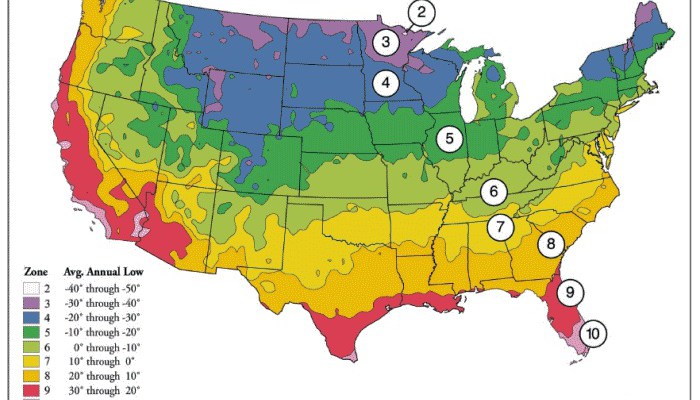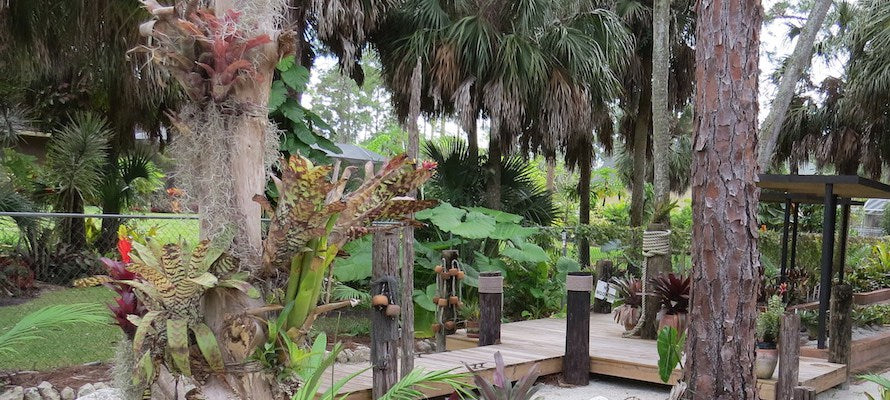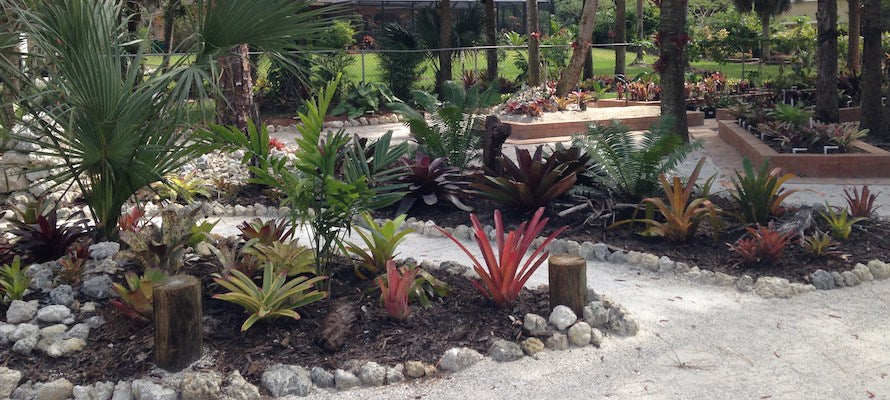Your Cart is Empty
Get Free Shipping on all orders $120 or more.

Bromeliads consist of a large family of plants native to temperate North, Central and South America. These plants are quite unique in the fact that they can be found growing in numerous habitat types such as forest, savannah or even the desert. They can be found growing on trees, on scrub, on rocks or in the soil. This amazing life process gives these plants the ability to adapt to a wide range of environmental conditions but if the grower has a general understanding of the needs of individual species or hybrids or even just a groups with similar requirements, a plant can reach its full potential of size, form, color and general appearance. This can be done by doing a little research on the individual plant or contacting your seller or the internet for more information. This information sheet will focus on temperature.
Temperature is one of the key success factors in caring for your Bromeliad.
Bromeliads are tolerant plants that can survive in a variety of temperatures. Most of the bromeliads in horticulture prefer temperatures of 70-90°F for days and 50-70°F for nights. However, they can take even higher temperatures provided the humidity is increased. While they can also take temperatures down to freezing, they are happier if it doesn’t get below 50 degrees Fahrenheit.
A rule of thumb: the lower the temperature, the lower the humidity; the higher the temperature, the higher the humidity. It is also important to remember that when temperatures and humidity are high, it is very important to provide good air movement around your Bromeliads. Good air circulation provides more carbon dioxide for growing and cuts down on the possibility of disease.
All Bromeliads are not created equal when it comes to temperature hardiness. Bromeliads come from a wide variety of environments. They range from sea level on the equator to high elevations and northern and southern extremes in latitude. They do all have one thing in common, they are all considered either ‘tropical’ or sub-tropical’ plants. This basically means that they do not tolerate low temperatures at or below freezing. That being said, because of the wide variety of habitat we find them originating from, some are much more cold ‘tolerant’ than others. What this basically means is that while some may withstand short periods of at or below freezing temperatures others may perish when the temp dips into the 40’s. Some species that are native to the cooler climate of high elevations may perish if the temperature climbs over 90 degrees for a sustained period. When looking to providing an environment where your Bromeliad will thrive, it is a succinct advantage to the grower if you have an idea of the plants original habitat. With that information you are better prepared to judge whether to select that particular Bromeliad. Although most Bromeliads can adapt to different growing conditions, some are very sensitive to having it just right for them. It is a good idea to know which specimens these are.
Hardiness zones were developed in the United States by the Department of Agriculture and refers to a general geographical area that is categorized by its climatic conditions. When a plant is described as being “safe for a numbered zone” such as “safe for zone 9”, it means that the plant is generally capable of planting outdoors in that that region or zone. In other words the plant can withstand the minimum winter temperatures that are typically encountered in that Hardiness zone. Bromeliads are usually grown outdoors only in zones 9 and 10.
If your plant is meant for outdoors, and you live in a zone other than 9 or 10, you are going to have to provide a warm location for your plant to winter. This means either a greenhouse, solarium, or a spot inside the house or heated garage near a window. Zone 9 may have to provide some protection for cold sensitive plants left outdoors on the coldest of nights. This may mean a covering of up with an insulated ‘frost blanket’ if temperatures dip into the low 30’s. Otherwise although the plant may not be killed outright it may incur frost damage such as patches of dead leaf areas.
Just like choosing a plant based on whether it will be placed in full sun, partial sun or shade, you may want to consider the ‘cold hardiness’ of your Bromeliad selections. With all the information available on the internet in this day and age, there is now substantial information on individual plant cold tolerance. You can also inquire about this information from your supplier if they specialize in Bromeliads. Large “box stores” are generally not a good place for these type of specifics. Below is a generalization of some of the more common genera:
Aechmeas: Most individuals in this group are generally considered hardy to 32 degrees
Billbergias: With some exceptions this group is hardy down to the low 30’s.
Cryptanthus: Known as “Earth Stars” it is better to provide for min. temps. Above 45 degrees.
Guzmanias: This group generally are considered more tropical and do not like temps. below 45 degrees.
Neoregelias: Another hardy group with most member able to withstand lows to 32 degrees.

When a bromeliad is ordered on-line, it will either be taken as an offset from a mother plant, or it will be taken from a pot. Either way, it is possible that it has already started to grow roots.

Bromeliads are a type of plant called epiphytes, which means that they draw moisture from the air and don’t need to be in soil to survive. While their roots can draw water and nutrients, they typically serve as a plant’s ‘anchor’, attaching and holding it place.

Although mosquitoes are not a pest that can harm your bromeliads, they can become very annoying to everyone around them. Mosquitoes are currently a topic of conversation as common sense and the facts often give way to rumor and sensationalism.